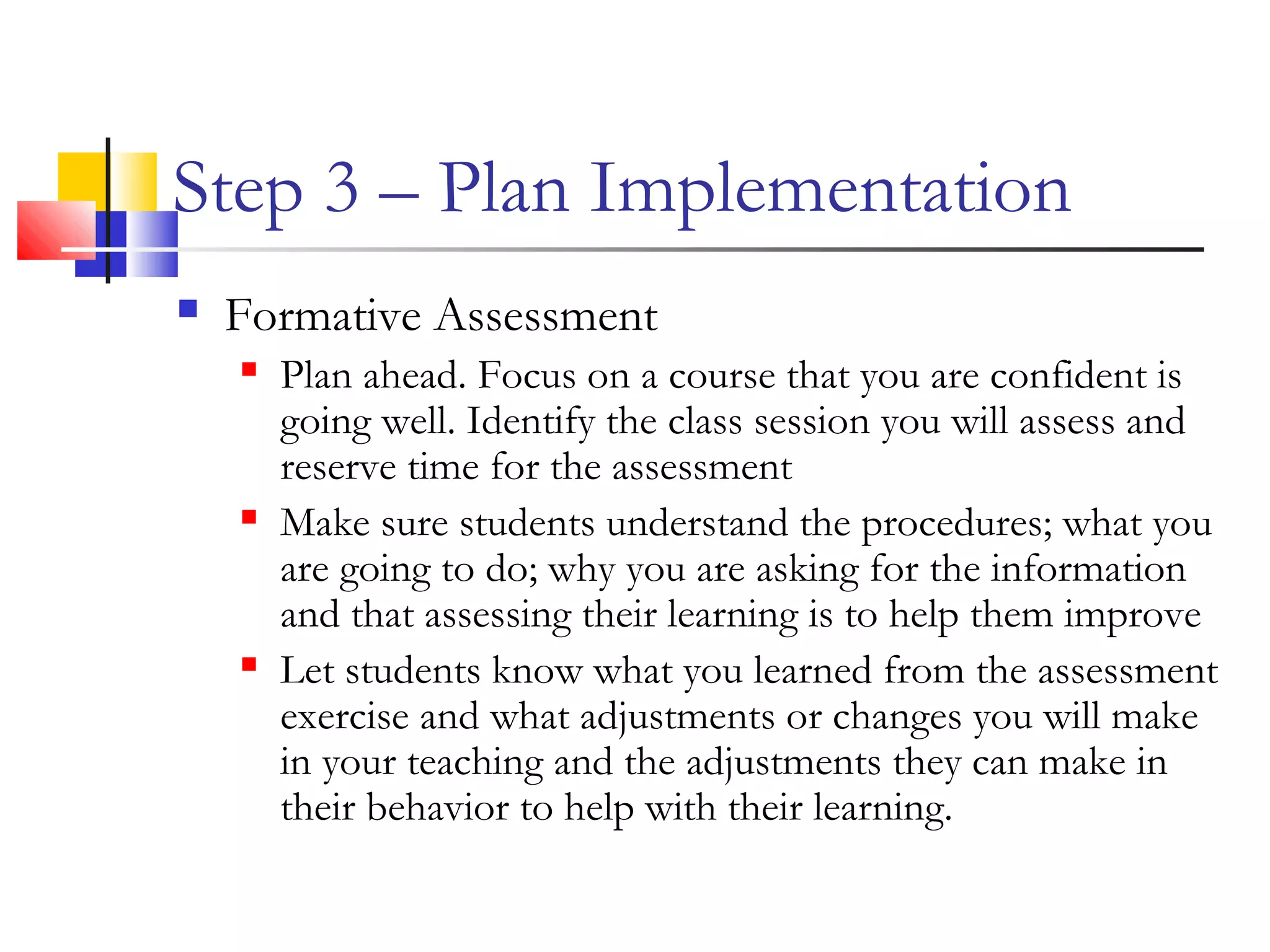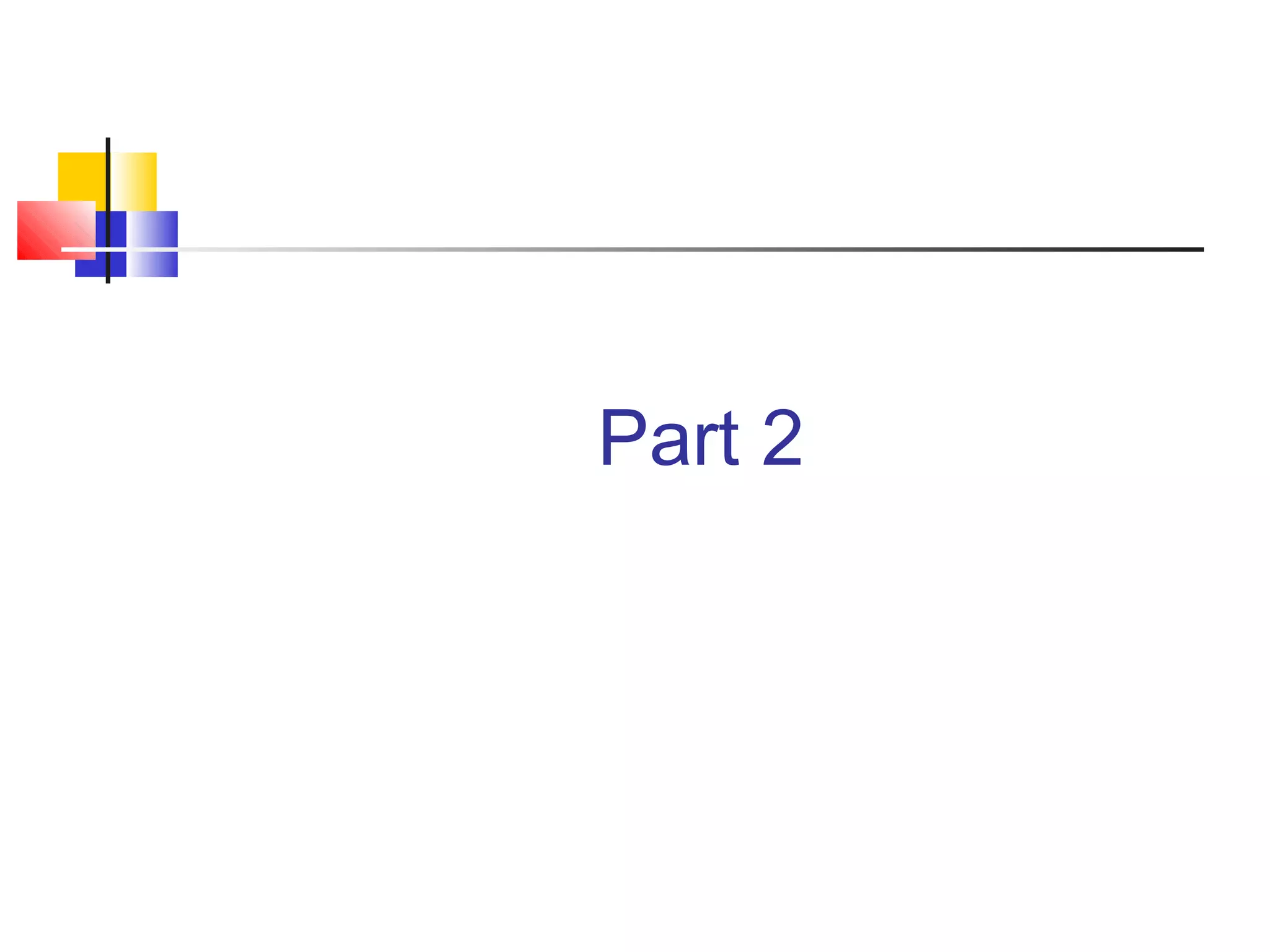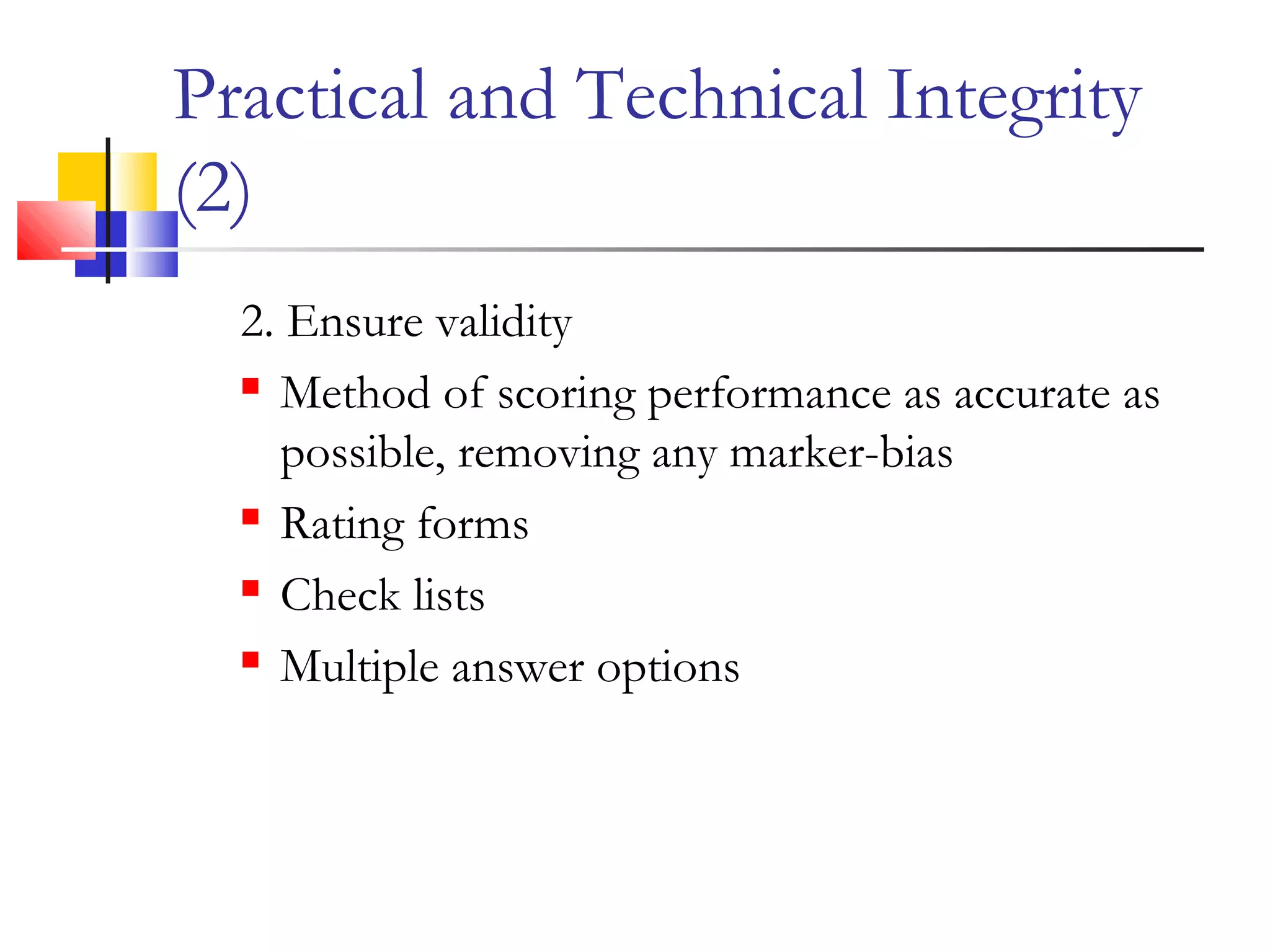The document discusses the assessment cycle and basic principles of assessment. It describes the assessment cycle as having four steps: 1) set goals and objectives, 2) determine assessment strategies, 3) implement the assessment plan, and 4) review the data to make changes. It outlines formative and summative assessment strategies. The basic principles of assessment are defined as clarifying the purpose, defining what is being tested, selecting appropriate methods, addressing administration issues, and setting performance standards. The document provides examples and details for each step of the assessment cycle and principle.






























